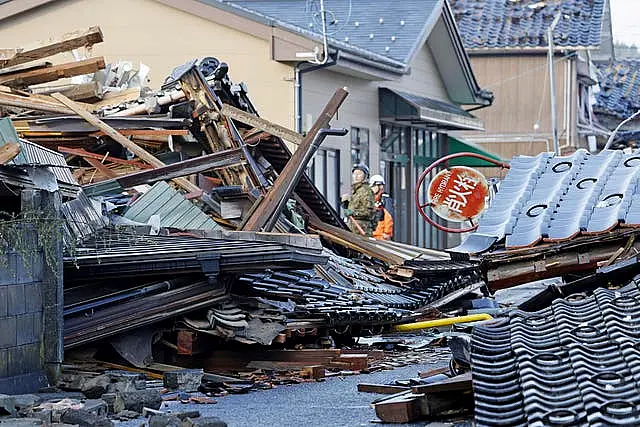Aftershocks in Japan are threatening to bury more homes and block roads crucial for relief shipments, as the death toll from the earthquakes that rattled the western coastline rose to 126.
Among the dead was a five-year-old boy who had been recovering from injuries after boiling water spilled on him during Monday’s 7.6 magnitude earthquake.
His condition suddenly worsened and he died on Friday, according to Ishikawa prefecture, the hardest-hit region.

Officials warned that roads, already cracked by the dozens of tremors that continue to shake the area, could collapse completely. The risk is growing with rain and snow expected overnight and on Sunday.
The death toll on Saturday rose to 126. Wajima city has recorded the highest number of deaths with 69, followed by Suzu with 38. More than 500 people were injured, at least 27 of them seriously.
The quakes left roofs sitting on roads and everything beneath them crushed flat, roads were warped like rubber, and fire turned one neighbourhood in Wajima to ashes.
More than 200 people are still unaccounted for, although the number has fluctuated. Eleven people were reported trapped under two homes that collapsed in Anamizu.
In an unusual gesture from North Korea, leader Kim Jong Un sent a message of condolence to Japanese prime minister Fumio Kishida, the official Korean Central News Agency reported on Saturday.

Japan earlier received messages expressing sympathy and promises of aid from US president Joe Biden and other allies.
Government spokesperson Yoshimasa Hayashi told reporters that Japan was grateful for all the messages, including the one from North Korea. He said the last time Japan received a condolence message from Pyongyang for a disaster was in 1995.
Along Japan’s coastline, power was gradually being restored, but water supplies were still short, and emergency water systems were also damaged.
Thousands of troops were flying and trucking in water, food and medicine to the more than 30,000 people who had fled to auditoriums, schools and other facilities.
The national Yomiuri newspaper reported that its aerial study had located more than 100 landslides in the area, and some were blocking lifeline roads.







